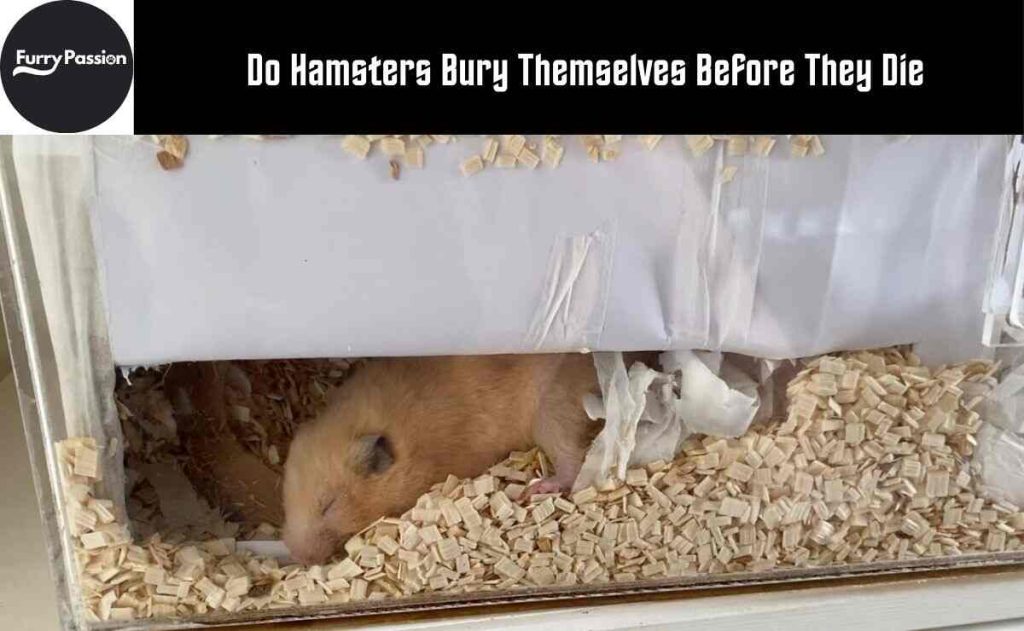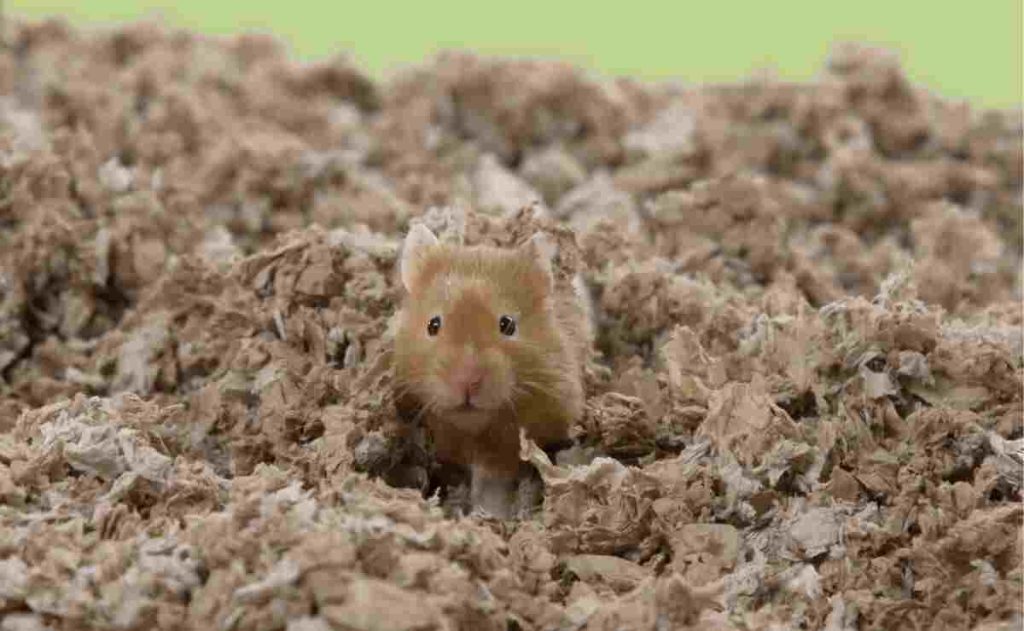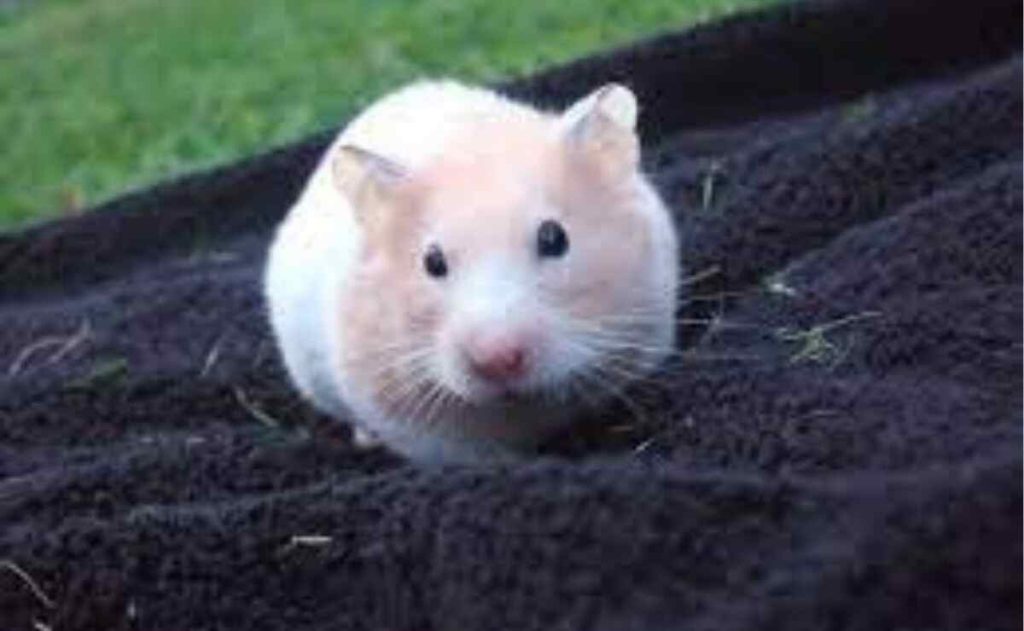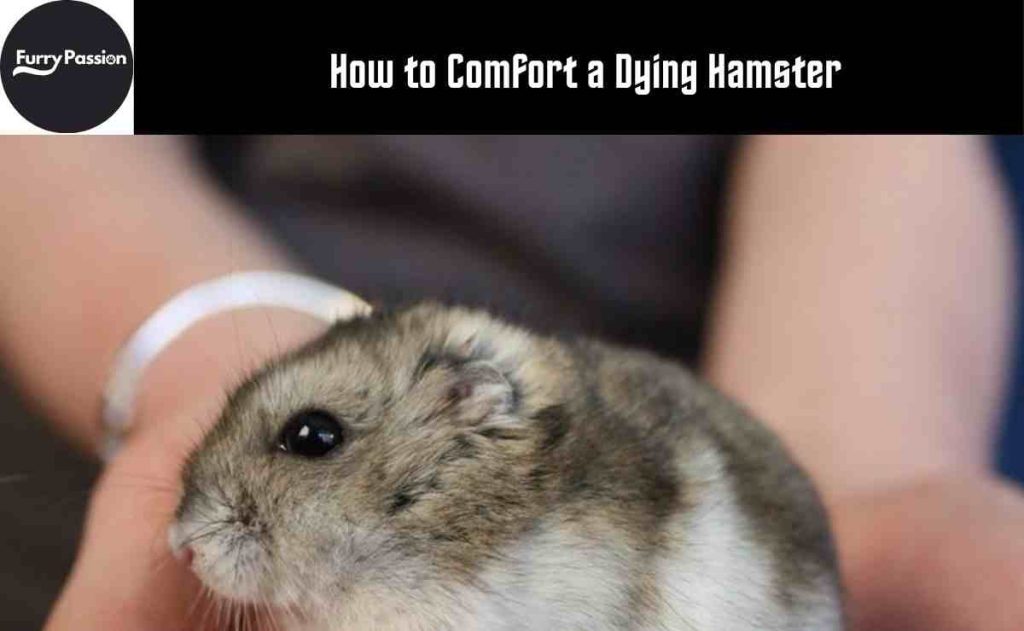Everything comes to an end. This also applies to your beloved pet like hamsters. These adorable pets have short lifespan, so you may have to say early goodbye when they die.
Many misconceptions are whirring around about their death like do hamsters bury themselves before they die.
However, it is not fully true. Hamsters don’t bury themselves. Burrowing is just their natural behavior. They make holes in their habitat to create a safe and secure place. So burying themselves is not a sign of their death.
Do Hamsters Bury Themselves Before They Die?

Hamsters are known for their burrowing behavior. But many owners think that the idea is a sign of their death. Actually, this myth has been circulating for years. So you must hear the thing. But it’s truly a misconception.
In reality, hamsters do not intentionally bury themselves before they die. Hamsters are natural burrowers. They often create elaborate burrows in their cages or enclosures.
This behavior is instinctual and serves several purposes. Mostly, they create dens and tunnels to make a safe and secure place to sleep, hide, and store food. Sometimes they used to hide themselves from chasers.
Hamsters typically spend solitary lives and prefer to have their own private space. Therefore, their burrowing behavior is not a sign of impending death, but rather a natural behavior that helps them feel secure and comfortable in their environment.
What Is The Reason People Believe Hamsters Bury Themselves Before Death?
The belief that hamsters bury themselves before death may originate from their natural burrowing behavior. They burrow into their bedding material to create cozy and secure sleeping areas. Sometimes, this behavior can be mistaken for an attempt to bury themselves in anticipation of death.
It is true that many owners find their dead hamsters in their tunnels. But it is not necessary to mean the statement.
When a sick or aging hamster appears less active, you can notice they spend more time in its sleeping area. As a result, they used to die inactively in the hole.
This is the reason some people believe the buried concept. But scientifically, it is not a behavior associated with preparing for death.
What Are The Signs and Symptoms Your Hamster Is Dying?

Hamsters are known for their short lifespan, typically ranging from 1-3 years. It’s always difficult to see our beloved pets nearing the end of their lives.
There are some signs and symptoms that may indicate your hamster is dying. By recognizing these indicators, you can ensure your hamster receives the care and attention it needs during this time.
- Less Active
One of the most common signs that your hamster may be approaching the end of its life is a sudden decrease in energy and activity. As hamsters age, their energy levels naturally decline.
If you notice a significant decrease in your hamster’s activity and it becomes lethargic, it may be a sign that it is nearing the end of its life. Also, if your hamster is refusing to eat or drink, this could also be an indication that it is struggling.
- Weight Loss
As hamsters age, they may experience weight loss due to a decrease in appetite or difficulty in digesting their food. If you notice that your hamster’s ribs or spine are becoming more prominent, it may be a sign that it is becoming malnourished and nearing the end of its life.
- Change In Appearance
Changes in appearance may also occur as a hamster nears the end of its life. Its fur may become dull, matted, or even start to fall out. Also, you may notice that its eyes appear sunken or cloudy. These visual changes can be distressing to witness but are often indicative of the hamster’s declining health.
- Change In Behavior
Changes in behavior can also serve as signs that your hamster is nearing the end of its life. It may become more withdrawn, spending most of its time in its nest or hiding spot. You may also notice changes in your breathing, such as rapid or shallow breaths.
How To Know If your Hamster is Died?

Determining if a hamster has passed away can be challenging. Because some hamsters exhibit behaviors similar to hibernation when they are actually deceased.
When a hamster is hibernating, their body temperature drops, and they enter a state of deep sleep to conserve energy. They have not died at all.
Hibernation can be triggered due to cold temperatures, stress, or illness. During this time, you can notice that your hamster’s breathing slows down, they appear stiff, and their body feels cold to the touch.
Hibernating hamsters may not respond to external stimuli, such as touch or noise. They can be very sensitive to disturbances during hibernation, and easily be startled awake, so you need to handle them with care.
On the other hand, when a hamster has passed away, you can notice certain characteristics that differ from those in hibernation. A deceased hamster will not show any signs of breathing, movement, or response to external stimuli.
Their body will feel cold and stiff, similar to when they are hibernating, but they will not wake up or show any signs of life, regardless of the level of disturbance. Additionally, the color of a dead hamster’s eyes may appear cloudy or glassy.
To confirm if your hamster has passed away, it is recommended to observe their behavior for an extended period, typically around 24 to 48 hours. If there are no signs of life or response during this time, it is likely that your hamster has unfortunately passed away. You can also examine your hamster through a vet.
How to Comfort a Dying Hamster?

When faced with the difficult situation of a dying hamster, as a pet owner, you need to handle it with care. So here are some tips to provide support during this challenging time.
1. Create a quiet and comfortable environment
As a hamster nears the end of its life, it may become more sensitive to noise and disturbances. Ensure that its enclosure or designated space is located in a quiet area of your home. Provide soft bedding materials and a cozy hideaway for added comfort.
2. Maintain a consistent routine
Hamsters thrive on routine, and even in their final days, this can provide a sense of security and stability. So you should also stick to a consistent feeding schedule and maintain regular interactions with gentle care and attention.
3. Monitor and adjust temperature
Hamsters are sensitive to temperature fluctuations, so maintain a comfortable temperature in their environment. Keep an eye on the temperature of the room and adjust accordingly to ensure they are neither too hot nor too cold.
4. Offer gentle and soothing interactions
While it may be challenging to handle a dying hamster, providing gentle interactions can offer a sense of comfort and reassurance. Speak softly to your pet, stroke their fur gently, and offer comforting words to create a peaceful atmosphere.
5. Provide proper nutrition
During their final days, ensure that your hamster has access to fresh water and a nutritionally balanced diet. You can offer soft foods that are easy to consume, such as cooked vegetables or fruits, which can provide vital nutrients and hydration.
6. Seek veterinary advice
If you notice any signs of distress or discomfort in your hamster, you should immediately consult with a veterinarian who specializes in exotic animals. They can guide pain management or recommend any necessary palliative care options.
Ultimately, you have to accept the natural cycle of life. It is difficult to witness their decline, but you can provide a serene and supportive environment that can help their final moments as peaceful as possible.
Final Words
The belief that hamsters bury themselves before death may stem from the fact that hamsters are burrowing animals. However, burrowing is a natural behavior in making bedding material to create a comfortable and safe sleeping area.
This behavior can sometimes be mistaken for an attempt to bury themselves in preparation for death. If a hamster feels ill or is close to death, it may appear less active and spend more time in its sleeping area, but it is unlikely to bury itself actively.
This belief is not supported by scientific evidence and should not be relied upon as an indicator of a hamster’s health status.
If a hamster is nearing the end of its life, it may exhibit certain signs such as decreased activity, loss of appetite, and changes in behavior. It is recommended to provide a quiet and stress-free environment for the hamster during this time.
In conclusion, hamsters do not intentionally bury themselves before they die. Their burrowing behavior is a normal part of their instinctual behavior and is not an indication of their impending death. It is important to provide a suitable and comfortable environment for hamsters to engage in their natural burrowing behavior.
